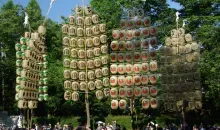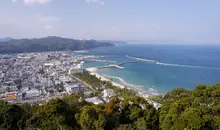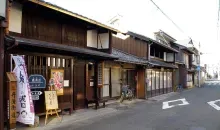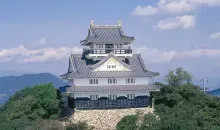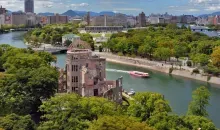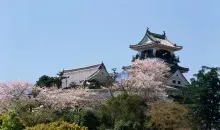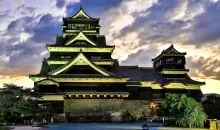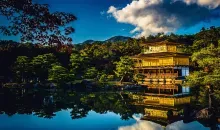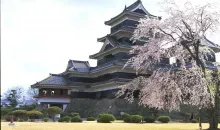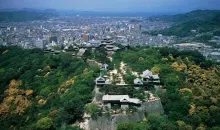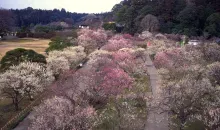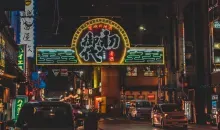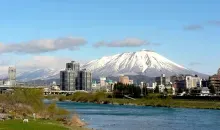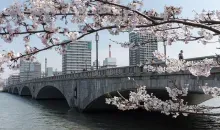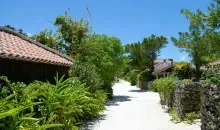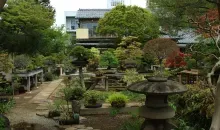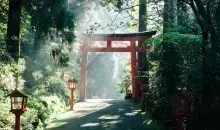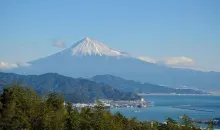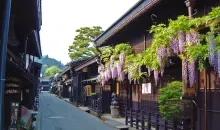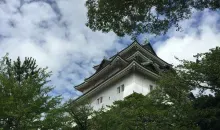Aomori 青森
Local Time 13:34
Symbol : cloudy_rainy
Temp : 17.5°C
Date : Today
Symbol : sunny_cloudy
Temp : 13.6°C
Date : Tomorrow
Symbol : cloudy_rainy
Temp : 16.5°C
Date : Sunday
Symbol : sunny_cloudy
Temp : 14.2°C
Date : Monday
Local Time 13:34
Symbol : cloudy_rainy
Temp : 17.5°C
Date : Today
Symbol : sunny_cloudy
Temp : 13.6°C
Date : Tomorrow
Symbol : cloudy_rainy
Temp : 16.5°C
Date : Sunday
Symbol : sunny_cloudy
Temp : 14.2°C
Date : Monday
Vast nature, breathtaking landscapes: Aomori region is a hidden gem worth a visit.
Tohoku, the north-eastern region of the main island of Honshu, offers unique natural and cultural treasures. Among these gems is the city of Aomori, capital of the famed prefecture, at the northern tip of the island, connected by the Shinkansen from Tokyo.
The city and region of Aomori
Aomori, located in the far north of Japan, is one of the most beautiful prefectures in the country, well known for its orchards. And the prefectural capital, Aomori City, is one of the most pleasant cities in Japan to visit.
Located in Mutsu Bay, Aomori City retains its Edo period (1603-1868) grid city layout, although the city was heavily bombed during World War II. Most of Aomori's sights are modern buildings, including several contemporary architectural gems: the Wa Rasse and A-Factory near Aomori Station, the Aomori Bay Bridge, and the Aomori Prefectural Tourism Center (ASPAM).
Aomori is not, at first glance, the most beautiful city in Japan as it was rebuilt with efficiency in mind, neglecting aesthetics and harmony as is too often the case. Nevertheless, the city makes up for this by offering rich culinary culture, a culture-specific to the region, and numerous cultural spots.
What to see and do in Aomori?
Visit the Aomori Museum of Art, which opened in 2006, and its architecture is worth a stop. The white cubic building was designed by architect Jun Aoki to harmonize with its historical surroundings. The Aomori Museum of Art houses various permanent and temporary exhibitions, including works by Shiko Munakata, Marc Chagall, and Paul Klee. The huge massive dog sculpture by Yoshitomo Nara in the museum has become a symbol of Aomori.
Close to the museum is the Sannai Murayama, a major archaeological site offering a view of the remains of a village from the Jômon period civilization (13,000 BC to 400 BC). Nearly 800 dwellings have been uncovered on this site, providing great insight into these hunter-gatherers, ancestors of the contemporary Japanese. A must for all history buffs.
The Aomori Prefectural Folk Museum, which has a large collection of pottery from the Jomon period (13,000 BC to 400 BC), miniature reconstructions of Jomon huts and tools from this early period of Japanese history, whose study was revolutionized by the discovery and excavation of the Sannai Maruyama site and the Komakino stone circle in Aomori, southwest of the city near the Aomori Museum of Art. Other exhibits at the Aomori Prefectural Folk Museum include exhibits on the life and culture of the region during the Edo period, manifesting the significance of Aomori City as a port city.
The Munakata Shiko Memorial Museum of Art exhibits the woodblock prints of Aomori native Munakata Shiko (1903-1975), the "Vincent van Gogh of Aomori", including his masterpiece "Ten Great Disciples of the Buddha", as well as the artist's oil paintings, illustrated books and calligraphy.
The Aomori Contemporary Art Centre (ACAC), located on the grounds of the Aomori Public High School, was designed by the internationally renowned architect Tadao Ando. The building and its water feature are perfectly integrated into the surrounding forest. The Aomori Contemporary Art Centre holds frequent exhibitions of contemporary Japanese and foreign artists.
In recent years, the city has restored its riverbanks, which now offer beautiful walkways. The Aomori Bay Bridge, the cable-stayed bridge over the bay, makes you feel very small. Visit the Hakkoda Maru, a former ferry that serviced between Aomori and Hakodate from 1964 to 1988, and walk about the strange pyramid that houses the prefectural tourist office, ASPAM. Its platform on the 12th floor offers a beautiful view.
Other popular places to visit in Aomori are the Showa Daibutsu of Seiryu-ji Temple, which houses the largest bronze statue of the seated Nyorai Buddha in Japan, at over 21m high. Seiryu-ji Temple also houses a 39m high pagoda. Visitors can enjoy morning meditation sessions and its famed "shojin-ryori", vegetarian meals.
Festival in Aomori
Of all the great attributes of the city, Nebutamatsuri (a traditional festival) held between 2 to 7 August, attracts more than 3 million people each year to the parade of floats called Nebuta. These floats represent historical figures or scenes, but also flowers or animals. They are made of paper stretched over bamboo and wooden (or wire) structures. Bright and colorful, the floats can be up to 9 meters wide, 7 meters long, and 5 meters high!
Shopping in Aomori
The main shopping areas in Aomori are the areas around Aomori Station and along Shinmachi Street. Near Aomori Station are A-Factory, Auga Department Store, Aomori Fresh Fish and Vegetable Centre, an interesting indoor market with numerous stalls selling a variety of fresh fish, vegetables, and ASPAM, where you can buy famed Aomori products such as Aomori Apples, apple cider, sake, Hiba cypress woodwork, Kokeshi dolls, Koginsashi embroidery, Tsugaru lacquerware, Kanayama-yaki ceramics, and marine products.
Shinmachi Street is home to a number of antique and local craft shops as well as the Sakurano, Beny Mart, and Nakasan shopping centers.
Aomori's culinary specialties
Aomori Prefecture is known for its apple, sake, and fresh seafood production.
In Aomori, apples are the main crop. Sharing its similarity with the famed European region of Normandy, in short, Aomori is the apple-based culinary capital of Japan: hot apple cider, apple mousse, apple pie, and anything made from apple!
Read also: Aomori's culinary specialties
Sightseeing around Aomori
Visiting the city of Aomori also means discovering its surroundings.
- Hirosaki City - To the west of Aomori is the charming city of Hirosaki. In addition to its monumental castle park, famous for its thousands of cherry trees, the town has several Edo period wooden houses formerly owned by local samurai and merchant families, a collection of Meiji era (1868-1912) buildings, the Fujita Memorial Garden, a botanical garden in the castle park and beautiful temples, including the five-story Saisho-in pagoda.
- Mount Hakkoda - To the south of the city is Mount Hakkoda, consisting of eight non-active volcanoes. The area is known for its skiing in winter and hiking in summer, during which time is covered by the thriving plants of Hakkoda. It is known for its "snow monsters" (trees covered in frosted snow), and for a variety of winter events, including winter walks along the Hakkoda-Towado Gold Line, snow-lined roads with banks up to 9 meters high. The place is infamous for the disappearance of 199 soldiers in 1902 during a storm, an event immortalized in the 1977 film Mount Hakkoda by Shirô Moritani.
- Shimokita Peninsula - The long Shimokita Peninsula, northeast of Aomori City, is best known for Osore-zan, the "scary mountain" that is considered the gateway to the afterlife and the home of wandering spirits.
- Asamushi onsen - The onsen resort of Asamushi is located northeast of Aomori City on Mutsu Bay and is a 30-minute drive or train ride away.
- Lake Towada - Finally, consider a trip to Lake Towada, which straddles Aomori and Akita Prefectures. The crater lake, a natural wonder is the third largest and deepest lake in Japan and is known for its crystal clear water.
- Oirase Gorge - The Oirase Gorge is a popular destination for cyclists and hikers. For 14 kilometers between Yakeyama and Nenokuchi, on the shore of Lake Towada and at the foot of Hakkoda-san, lies the fantastically beautiful Oirase Gorge. The crystal clear Oirase River flows along the road through a beautiful forest, known for its spectacular autumn foliage colors. Several icy rapids and plunging waterfalls add to the beauty of the area, the main center of which is the charming Ishigedo.
Interested by Aomori
Discover other cities to explore

























